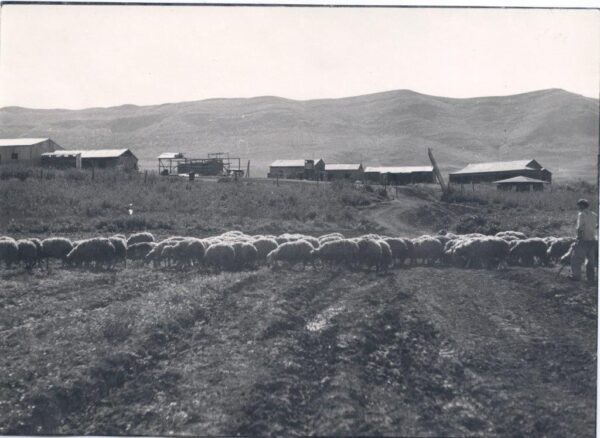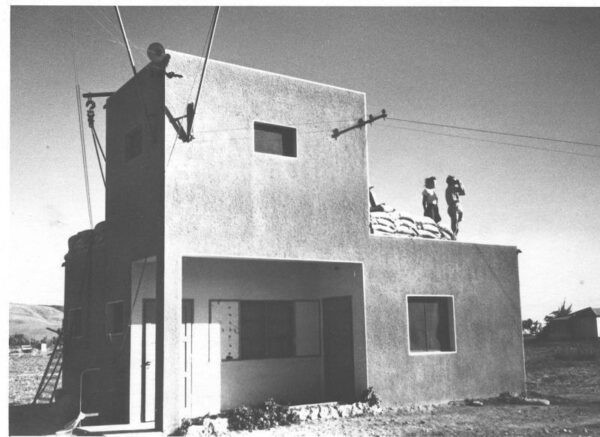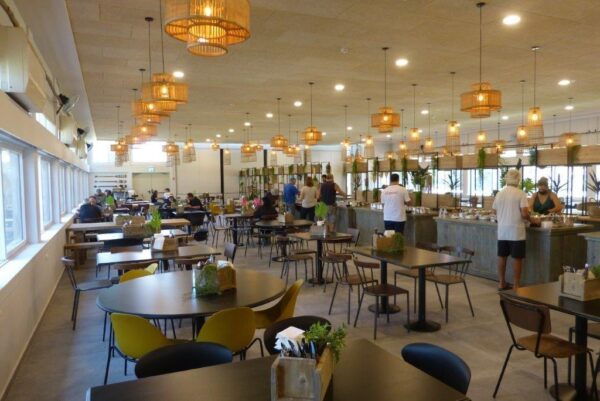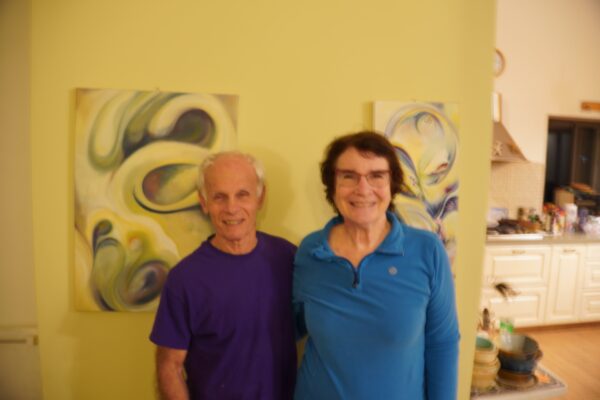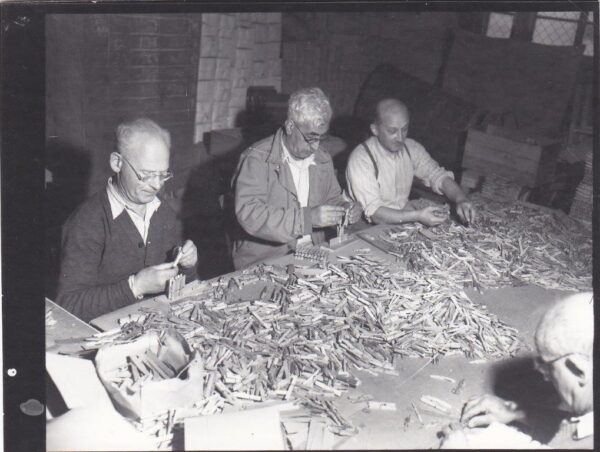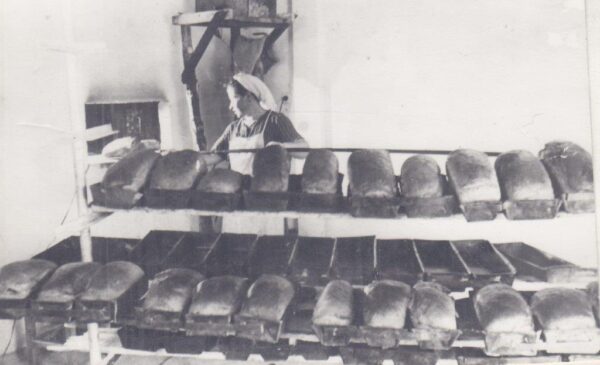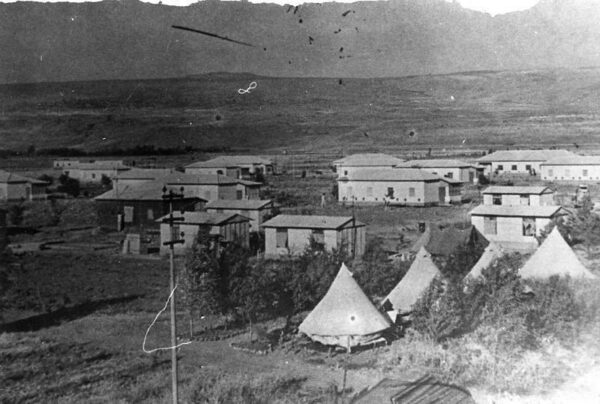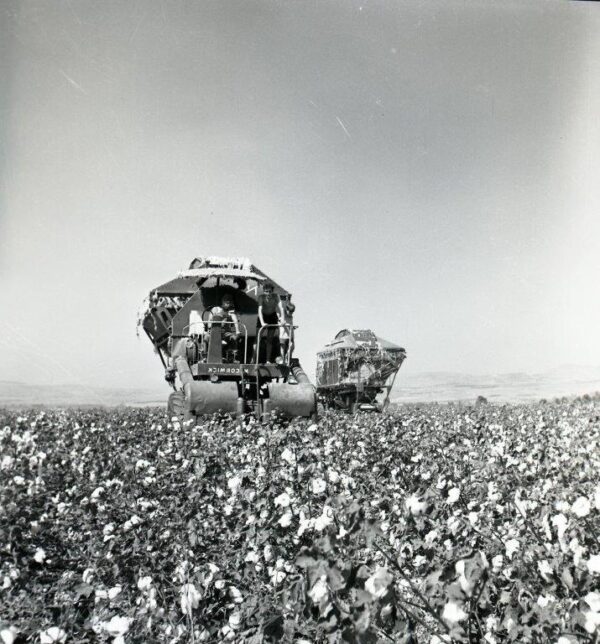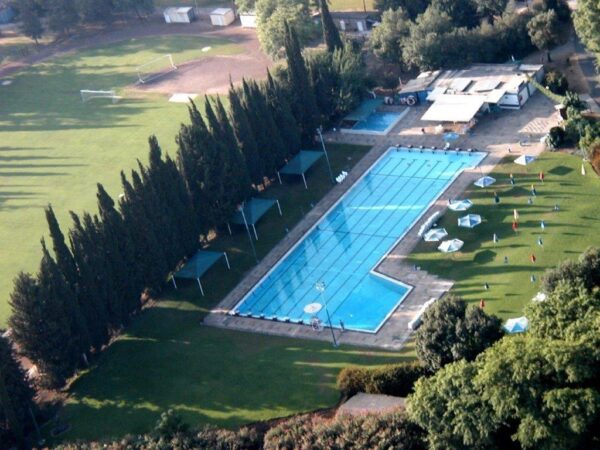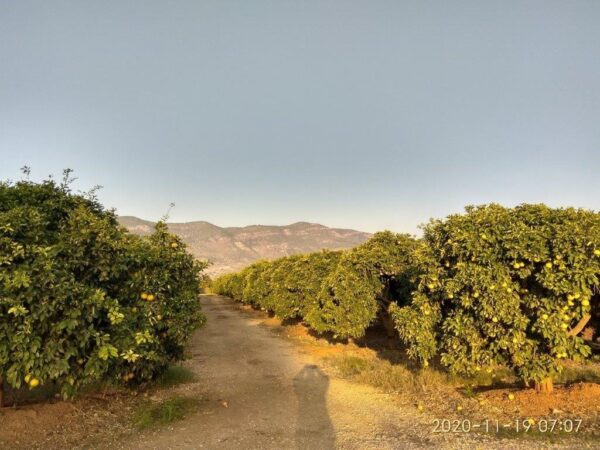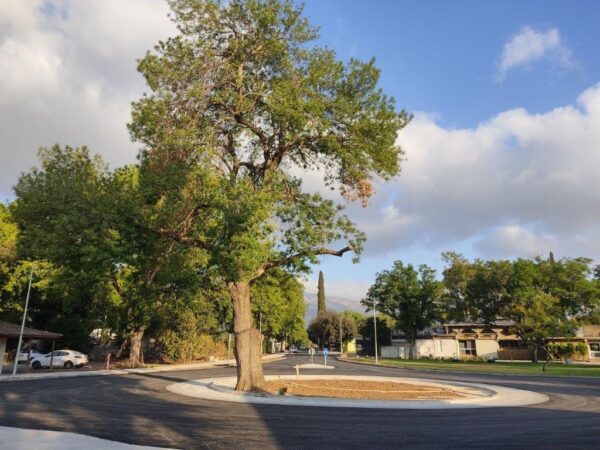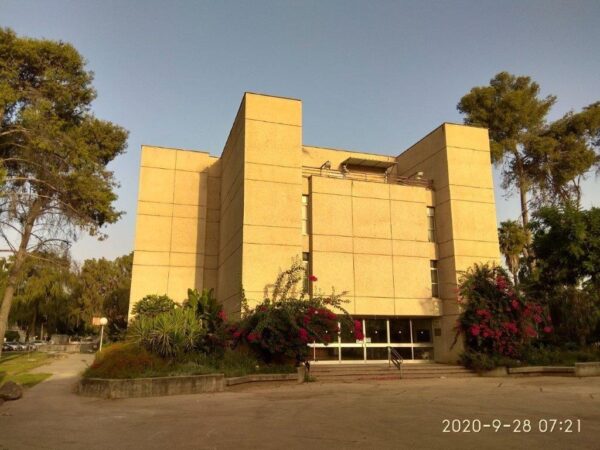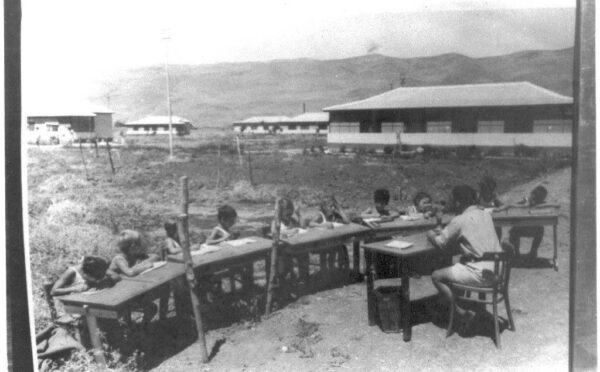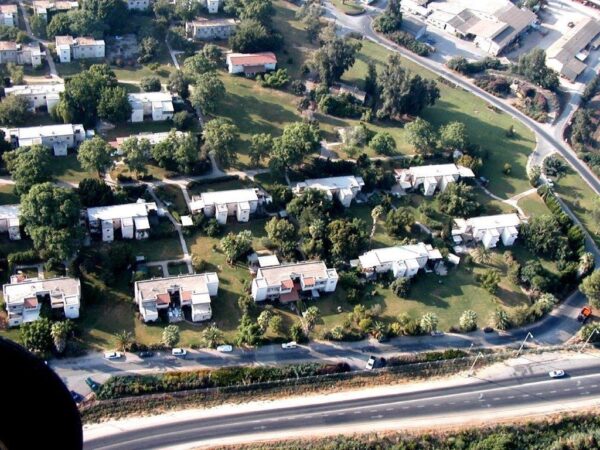


Laurie Rimon fell in love with the Israeli collective farm of Kfar Blum after spending a high school year there in 1969-70. She emigrated from the United States to Israel as soon as she graduated high school in 1971. She’s now a dual citizen.
Rimon remembers a crucial change in her outlook toward the Jewish state’s distinctive voluntary collective farms, called kibbutzes.
She told The Epoch Times that when she was 40, she still had to ask her mother in America for money for plane tickets to visit her in western New York, where she grew up.
Kfar Blum, a kibbutz in the extreme north of Israel near the Lebanese and Syrian borders, kept most of the members’ salaries even when, like Rimon, they began working offsite.
It was a hard lesson to learn.
Early kibbutzniks often subscribed to Marxist notions like “from each according to his ability, to each according to his needs.”
Later generations, not so much.
The kibbutz movement—there are about 270 today in Israel—has become less socialist and more capitalistic over time.
Members of Kfar Blum—named after Leon Blum, France’s socialist prime minister three times in the 1930s and 1940s—and other kibbutzes found out through hard experience that socialism doesn’t work.
Rimon, now 68, went to work offsite around 1988 for an education tech firm. The kibbutz took her entire paycheck. There was money in her name in an account. But Israel suffered from bad inflation. And Kfar Blum, like most other kibbutzes, was in debt. She wasn’t allowed to tap her savings account to book the flight.
“All the kibbutzes were in a bad financial situation then,” she recalled.
Israel’s kibbutzes had been symbols of a new country plunging into the future. And many Israelis wanted to break ties to an unhappy past.
Many members had risked their lives or undergone harrowing journeys to get there before Israel became independent. They were enthusiastic about building a new life and a new nation, and “making the desert bloom”, as the saying went.
They became tanned, rugged outdoor workers—a different image of Jews from, say, stereotypes of the impoverished and intimidated Jew of Eastern Europe, the pious Orthodox one patiently awaiting the Messiah, the bourgeois businessman, or the proper professional.
The kibbutzes produced early Israel’s best soldiers and generals. Kibbutzniks kept vigil against border raids and tensions with Arabs before and after independence. They had to be; they were more isolated.
Kibbutzniks liked the communal life, though, with children growing up in collective children’s homes. That freed their parents to participate in kibbutz life. They enjoyed getting three meals daily in the dining hall plus free allotments of groceries to take home.
Rimon remembers getting eggs, oil, flour, and fruit to take home. But she usually got a large amount of a single in-season fruit. “You couldn’t make a fruit salad.”
“When they changed the system, it was strange having to pay for all that. ‘What? I have to pay for flour?!’ But then you get used to being able to buy what you want. Now I can make the cake I want to make.”
Founding kibbutzniks tended to be socialists. Right-wing Zionists preferred individual farming ventures called moshavs. Farmers there shared certain functions as American farmers might with co-ops.
Not all kibbutzes have flipped, Rimon’s husband Avner Rimon told The Epoch Times at their house at Kfar Blum.
Avner Rimon mentioned two kibbutzes that remained socialist. He said, though, they could afford it because they’d prospered. “They’re still living to the original kibbutz ideals. You can find idealistic explanations, but the economy is the motor behind it.”
Most other kibbutzes shed socialism reluctantly over the years as they struggled financially. Agriculture didn’t pay well and not all new business ventures panned out.
“A kibbutz is a small entity,” said Avner Rimon. His parents were American. He was born in Haifa, and the family moved to Kfar Blum when he was six months old. He’s spent his whole life there.
“The difference between the successful and the non-successful were the industries they managed to have on the kibbutz. The chances that you picked something good were not very good.”
“It became obvious we couldn’t make it on agriculture alone. Like all of the world, we weren’t making money in agriculture.”
“So many kibbutzes went to plastic factories. It’s a low-tech industry. It worked for a while.
“Whether plastics were a good deal depended on what you were doing. Some plastics are still good today. But people were wise enough to realize we can’t put all our eggs in one basket.”
Kibbutzes were central to Israel’s early development, before and after Israel’s 1948 independence. Their story is laid out in a candid 2005 monograph by Kfar Blum’s Dubi Benari.
Benari wrote that early Jewish settlers, starting in the 1880s, tended to form moshavs, private farms that cooperated in production and marketing as American farms might in coops. The rise of the socialist movement in the early 20th century, though, brought settlers who preferred a socialist model.
In some ways, it was better suited to their task.
In this Ottoman Empire backwater, private farms had to turn a profit to survive. Kibbutzes didn’t seek profit, which is perhaps why so many found themselves in debt later.
Early on, though, it gave them an opening while the moshavs struggled. Their disdain for what they saw as bourgeois comforts served them well when few such comforts were available.
Kibbutzes were necessary for the entire Jewish settlement in Palestine. They provided food. They established the land as Jewish and defended it.
Because they could host military training, away from British eyes, and had ample hiding places for arms, they were where the Haganah, the underground Jewish army, trained. It was easier to disguise what they were doing.
The Palmach, the elite fighting force later forming the core of the Israel Defense Force (IDF), allied early with the kibbutzes.
Only a small percentage of the population, kibbutzniks after independence would generate a disproportionate number of Israel’s military leaders.
Generals, paratroopers, and commandos. In many countries, country boys—who could build, fix things, live outdoors, use guns, and are not spoiled by soft city life—had a strong presence in the army.
Kibbutzniks were no exception, and the collective ethos served them well in the military.
The United Nations’ 1947 partition of Palestine into Jewish and Arab states left the Jews with pockets of land barely connected and tough to defend.
The Arabs didn’t accept the partition and invaded immediately upon Israel’s independence on May 14, 1948.
Israeli leaders deemed the partition map void and realized the borders would be whatever they could seize or defend.
After the June 1949 truce, new kibbutzes started in lands Israel had gained during the fighting—to put the countryside to work, bridge gaps between Jewish areas, and join Jerusalem to Jewish-majority areas along the Mediterranean coast.
The kibbutzes were the first line of defense against the fedayeen, Arab fighters who infiltrated at night. The IDF was still young and weak.
But the first years of independence delivered a fresh challenge. New immigrants, refugees fleeing North African or Middle Eastern countries, didn’t warm to European socialism. If they were going to farm, they preferred moshavs, private farms.
Kibbutzes no longer served as the first home for refugees.
The next challenge would be the 1967 Six-Day War, in which Israel—preemptively attacking as its neighbors prepared to invade—won a stunning victory. It conquered the West Bank from Jordan, the Golan Heights from Syria, and the Gaza Strip and Sinai peninsula from Egypt.
Kibbutzes were no longer on the frontier. Neither were they central to Israel’s military ethos: the IDF showed it was a modern military force, the strongest in the Middle East.
Outside investment began to flow into Israel. It became a U.S. ally. Roads, bridges, the power grid, ports, and airports were all improved. Agriculture, the kibbutzes’ primary undertaking, was no longer the economy’s primary focus.
As Israel changed, kibbutzes became less popular. Menachem Begin, a one-time right-wing terrorist whose election in 1977 marked a sea change in Israeli politics, famously denounced them.
At a 1978 speech at Kibbutz Manarah, Benari writes—Begin pointed his finger at the kibbutzniks and called them “the millionaires living beside their well-tended swimming pools.”
Begin as a politician wouldn’t have dared say that, Benari observes
if he hadn’t noted public opinion already shifting. Kibbutzes had lost their hold on the popular imagination. The romance was gone.
There were also generational changes. Early settlers were idealistic. Kibbutzes were often populated before World War II almost entirely by young people. They didn’t think much about child-rearing or elder care issues.
Their role, though, was what Israel needed then. These communities got their values from three things, Benari writes: their youth, their idealism, and their poverty.
The second generation, born on kibbutzes, were indoctrinated in the ideals but somewhat skeptical. But by the early 2000s, half of Kfar Blum’s second generation still lived there.
It was the third generation where the erosion happened in earnest. Second-generation members, writes Benari, didn’t indoctrinate their own children much. The third generation grew up questioning more.
They were exposed to a wider world through media and the internet. They often traveled for a year after their military service, and only 5 to 10 percent returned to the kibbutz.
Kibbutzes’ economic receding importance revealed structural weaknesses.
They paid everyone equally, but different personalities approached this life differently.
Leaders worked hard, took responsibility, showed initiative, and worried about the entire kibbutz. Their family life often suffered. They were exposed to public criticism, and they often burned out.
At the other end of the spectrum, some people gave and contributed less. They didn’t work as hard.
They seemed most interested in what they got from the kibbutz—the food, goods, and opportunities to socialize, Benari writes.
Most were, of course, in the middle.
Work rotation practices—moving people out of jobs to give everyone a chance—often replaced competent managers with incompetent ones.
The leaders found they could make more money working offsite and with fewer headaches. Many left.
Getting food, clothing, and other necessities for “free”—which is to say, the kibbutz paid for them—led to more waste.
As kibbutzes like Kfar Blum were privatized, they had to do it sensitively. Early kibbutzniks often experienced hunger during poor childhoods or during the Holocaust. Having to pay for food—and facing the prospect of not having enough—proved terrifying for some.
Benari notes Marxism itself moved away from the ideal of “absolute equality’ once it came up with the axiom “from each according to his abilities, to each according to his needs.”
On the kibbutzes, leaders were asked to give more, and did, but were paid the same as shirkers who did little. Leaders and shirkers weren’t giving the same amount.
So the kibbutzes changed further. It had rankled over the years, the Rimons said—that everyone was paid equally.
“Some would work more, and some were lazy,” Laurie Rimon recalled. “Some, maybe 20 percent, were lazy and didn’t work at all. But they still got as much as everyone else.”
The older generation who had built the kibbutz were more motivated than the younger generation, born there but not having chosen it themselves.
“They may have been believers [only because] it was an easy life for them,” Laurie Rimon said.
A miraculous thing happened, Benari writes. Once kibbutzes paid members more—and differently—they wasted less of the community’s dime.
The kibbutzes’ own balance sheets improved. Members who worked offsite were often underpaid but had shrugged it off, living as they did in a place that paid for their necessities. Now they demanded and got raises from their outside employers.
“The main change,” said Avner Rimon, “was to put more responsibility on kibbutz members, not to think the kibbutz was responsible for everything.”
It had been an idealistic movement. Born in adversity—the poverty or persecution members had known elsewhere, perilous journeys to get there, and strife-torn early years—”things were so difficult it was easy to motivate people. You overcame problems together,” Avner Rimon said.
“But as things got easier, you found all kinds of people saying, ‘I’m sick.’ Or, ‘I don’t want to do this.’ It wasn’t the majority [but it was there].”
“The cracks were there from Day One. There were always people who didn’t want to pull their weight,” he said.
“If they don’t have to do it, and they get the same thing, then why do it?”
As they diversified, kibbutzes set up boards of directors and executive directors, often outsiders.
The kibbutz still had a stake and could fire board members if it saw fit, but otherwise could no longer meddle in the business’s affairs. Businesses, unsurprisingly, became more efficient and profitable.
One difficult step was privatizing the kibbutz’s assets, something still underway at Kfar Blum when Benari wrote. It involved difficult questions of how to value the founders’ contributions, living or dead.
Yonatan Porat, Kfar Blum’s archivist, has strong feelings about this: he voted for Kfar Blum’s asset distribution plan but later saw it as depriving him of an inheritance. He said his parents died before the program came about, and didn’t count in the asset calculation formula used.
Other things helped change the Rimons’ view toward private property. Apartments with so-so construction let neighbors’ noise through thin walls and cooking smells wafting in. That grated on them. The Rimons built a house about 15 years ago.
They live in the comfortable three-bedroom, two-bath dwelling today. The founders of the kibbutz movement would have found home-owning bourgeois.
Today, the opportunity to build a house in a small and crowded country where land is expensive is a kibbutz selling point. It helps attract new members or draw former ones back.
Lior Peretz, who lives in Rishon Letzion south of Tel Aviv with his wife Yaar and their baby son Yuval, says they plan to move to the kibbutz Ein Carmel, south of Haifa near the coast, where Yaar grew up.
The opportunity to have a house—they’ve already begun buying land through the kibbutz and arranging water and electric hookups—is part of it.
Owning a small apartment in a metropolitan area can cost 3 million shekels, about a million dollars. “For that, you get about 100 square meters of apartment space,” Peretz said. That’s less than 1100 square feet. Young Israelis generally need help from their parents to afford even that.
“We could try to find houses elsewhere” in less expensive areas, Peretz said. “But to be in a community and have a community life, in a place that is not Orthodox,” adds to the appeal, he said.
He says Orthodox Jews in Israel, who cluster tightly in small communities, have achieved that sense of community.
“Here,” Avner Rimon said, referring to Kfar Blum, “you can build a one-story house for what it would cost you to have an apartment in the city.”
Kfar Blum shifted into fields beyond agriculture over the years. They still farm, but the farm work is done by Thai workers who rotate in and out of the kibbutz.
The kibbutz founded a hotel. Regional schools are located there. They have a factory making control systems for sprinklers.
Kfar Blum faced various culture shocks over the years, Porat recalls. He was born on one of the kibbutz’s predecessors at a different site and has lived in Kfar Blum his whole life.
One shock was the departure of immigrants, notably from South Africa or the United States. They found kibbutzes too collective. They regretted losing privacy and control of their children. Porat, whose mother was American, lost friends during these departures.
Another shock was ending the children’s home. Some kibbutzniks who grew up, married, and had their own kids didn’t want to give them up to the children’s home.
A move to end the system failed to get enough votes in 1969, but succeeded the following year, recalls Porat. Now 78, he was then a young married without children.
He helped lobby reluctant members of the older generation to permit the change. Under the new system, children were raised by their parents. They could choose whether to move to the youth dorms when they turned 16.
The kibbutz at first didn’t make it easy for parents to take their children home, Porat said.
“We said, ‘It’s your decision. You can move. But we won’t make your house bigger.’ But they moved even without accommodations.”
“My brother lived with three children in 40 square meters,” less than 500 square feet, Porat said. “It was very small. They knew the price, but they did do it.”
Over time the kibbutz did give larger quarters to those with larger families.
Porat had grown up in the children’s home and liked it.
“I didn’t think of going to live with my parents. It was enough to see them in the afternoon for tea time. There was no TV. We were always outside, playing games. Everyone together. We liked it very much.”
Children’s homes were considered an essential feature since the first kibbutz, Degania, opened on the Sea of Galilee in 1910. Children grew up together and lived so closely, Porat said, and that bonded them to each other as the kibbutz’s next generation.
But it didn’t work for everyone, he said. His wife Jeri, who moved there at age 4 from Brooklyn, was very unhappy in the children’s home. She ran away home to her mother, and her mother didn’t make her go back, Porat said.
The kibbutz still has a children’s home, but the children don’t live there. It’s for after-school and childcare programs.
As time passed and the generations changed, the kibbutz lost members.
“It was almost like an old people’s home 15 years ago,” Laurie Rimon said, as young people left for their military service and didn’t come back. “We had to reach a critical mass. When people started coming back, then others would come back.”
The kibbutz rebounded through several moves. It established an allied community, a neighboring subdivision. Homeowners there pay a kibbutz fee and use some services but are not full members.
Only children of members may join Kfar Blum as full members, Avner said, but some kibbutzes accept outsiders.
Kfar Blum has around 300 full members who live on the kibbutz and almost 500 in the subdivision. Benari writes that many of the third generation like living near the kibbutz without the rights or responsibilities of full membership. They like living near friends and family.
Over time Kfar Blum has become less of a collective farm and more of a community supported by members’ tax dollars, the Rimons said. It’s still something more than an American town, said Laurie.
“There’s a sense of community that you don’t get living in a city.”
Laurie Rimon said that none of their three grown children or their families live there.
A son lives in the United States, one daughter lives in another kibbutz, and another daughter lives in Tiv’on near Haifa. She hopes her son and his wife will move back from America.
“They’ll come back,” she wisecracks, “when my granddaughter brings home a boyfriend her mother doesn’t like.”

